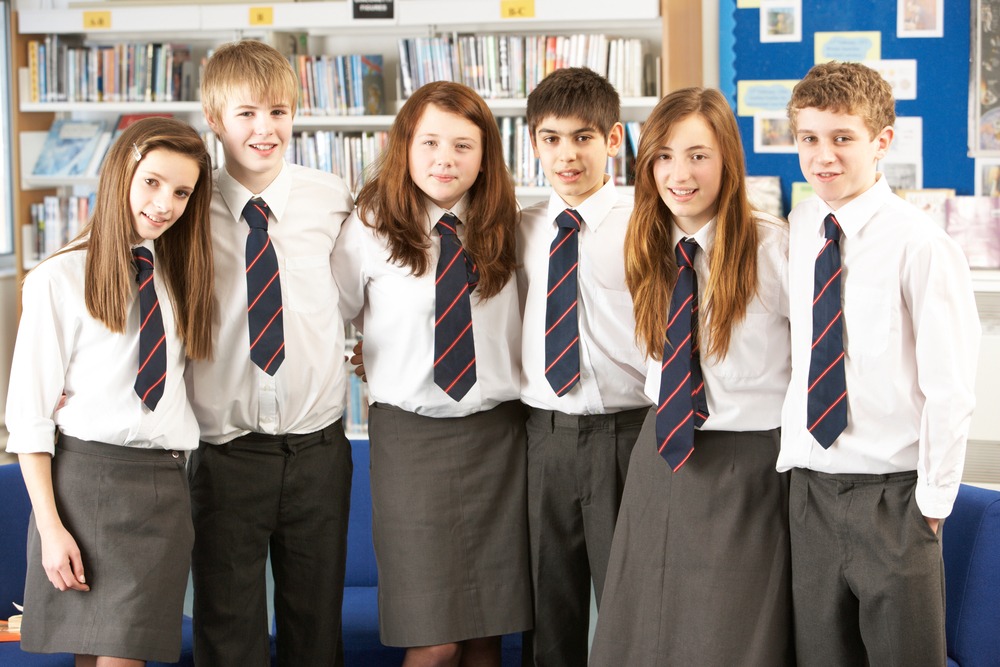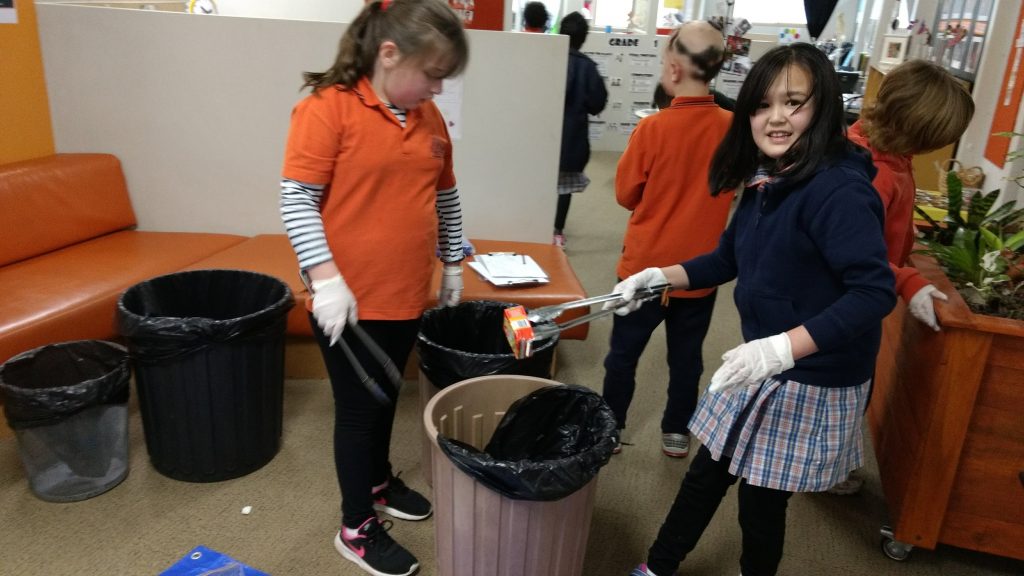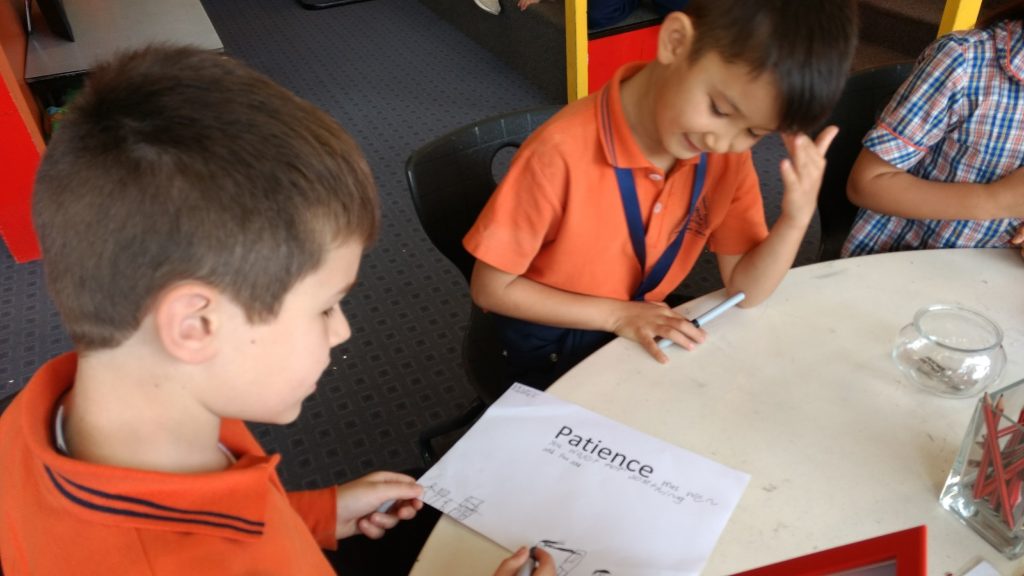The Stock Image
How do you feel when you see the same ‘stock images’ of young people appearing in education blogs and other publications? Of course, I’m only too aware of the privacy and safety issues around protecting our children from revealing images of themselves on the internet. So, it makes sense that online writers and publishers use copyright-free sources which guarantee anonymity.
On the other hand, as I looked at the stock images of children in learning environments, such as those I’ve posted above and below this paragraph, I think of how their posed nature are ‘frozen’ in the same way that photographed students appear in good-news-school-stories in newspapers and newsletters. Some child breaking the barrier of known knowledge! Some group of high achievers winning a marvellous prize!

Now, as we use the stunning array of photographic and video tools available to us, safety and privacy assured, what are we learning about what’s needed to authentically document our students’ learning?
What are we choosing to see?
I thought long and hard about what documenting student learning involved while interviewing teachers at Wooranna Park Primary School while trialling SCHOOL STORY SOLUTIONS. For example, in the Year 2 teaching team’s documentation of initiating a ‘class parliament,’ I saw how experts sorted out the balancing act of age-appropriate expectations and pivoting towards authentic ‘learning opportunities’. The team’s (Mary, Sapna, Zana and Philippa) classroom story of Year 2’s Run A Class Parliament engrossed me with its sense of organisation, yet simultaneously, its spontaneity of direction. This is how Mary explained it to me.
The parallels between what parents and teachers observe seem only too obvious. Imagine your baby is at the crawling stage. You know that sooner or later the child will take to standing up. When they do they will want to hold onto something, and that, eventually, he or she will walk independently, right? While some parents are anxious about rushing the process, there’s really no need because you know that, in most cases, children start walking. It’s like that with learning in general. When we don’t rush the process, the beauty of it unfolds, revealing to us the child’s enjoyment of learning. There’s no point in giving them ‘answers’. I think some people want that control which dispensing knowledge gives them. They just want to get to the end result.
The collective wisdom of the teaching team stays with me. Yes, I believe that Seesaw-like apps and Smartphones have given rise to more images of ‘students at work’. And as an arts educator, I acknowledge that such images fall into the formative assessment category of performance assessment. Nonetheless, I wonder if we are capitalising on those telling moments of how students are engaged in a task.
For instance, as citizen activists, these two Year 2 student activists below are measuring the amount of rubbish accumulated in the classroom. The image itself is a provocation for a conversation with them on establishing their understanding of measurement, that is, how the word is packed with meanings such as volume, weight and category.

For instance, as citizen activists, these two Year 2 student activists below are measuring the amount of rubbish accumulated in the classroom. The image itself is a provocation for a conversation with them on establishing their understanding of measurement, that is, how the word is packed with meanings such as volume, weight and category.
Remarkably, the story that unfolded about what it took to set up the Year 2 class parliament which I listened to became one in which I journeyed through the teachers’ two-year development. Student agency, they stressed, was the goal all along. It began, revealed Sapna when they interrogated the fantastical theme of magic in 2017. However, it also related to questions asked by Year Five & Six teachers at the beginning of 2018, asking the whole school to reflect on the qualities of an effective leader. Subsequently, it involved the Year 2s interacting with older students in performing a ‘class parliament’ and then trialling a Year 2 equivalent.
How technology is enabling us to see the ‘big picture’.
Then, out of the blue, a jolting disruption to a planned visit to Parliamentary Question Time happened. Children were outraged that the visitation rules of the Victorian Parliament decreed they were ‘too young’ to view the roughness of debates on the floor of the parliament! In an instance, the teaching team had an authentic ‘learning opportunity’ on their hands. Zana remembers the moment like this:
I think at Wooranna we are always thinking about the learning opportunity, and what Mary and Sapna recognized, by listening to the kids, was that learning opportunity.
Sapna adds her view:
Yes, we saw the opportunity in all its manifestations. We could learn about creating persuasive texts, so we could try to convince important people, to change their views, right? So we wrote persuasive letters, and we received responses from not only one minister but from everyone we wrote to.
Furthermore, at the time, I was struck with how the teaching team’s perspective of authentic learning resonated with WPPS Assistant Principal Janet Whittle’s view on the use of technology in the school. Isn’t visualising possibilities what we do?
What I think is technology is doing is giving us opportunities to learn to be better visualizers and to learn to take that visualized situation as an experience and use it to change your brains. And the research is really quite early on some of that. But what I think Kieran [Kieran Nolan, WPPS Education Technologist] is doing is that he is changing a lot of it. He’s giving children a lot of opportunities to visualize things that they may never have come across if they hadn’t been coming to the school.
Teachers already know this, right?

Yes, we’ve used still-photography and video in classrooms for decades. For instance, the over-the-shoulder picture of two children discussing the qualities of an effective leader is both unique to WPPS’s Year 2 class, yet it is also so familiar in character to what any teacher might do in setting up an inquiry task.
It’s easy to say ‘so what’, I know, as such moments are jammed into packed days of meeting student needs. Particularly, when meeting needs is entwined with the anxiety of accountability – reporting to parents, fulfilling teacher registration and just keeping up with planning and assessing protocols.
However, just like ‘print technology’ has been disrupted by online creation and publishing of texts, images have been transformed online through their connectivity. In short, they are no longer an end in themselves but they have become portals to better understanding how we find, read, linger, move around and react to what we see. This means viewing how the ‘content’ exists in a digital ecosystem. It also means viewing the metrics at the ‘back-end’.
Consequently, teachers are given on-going insights to ‘parent-viewpoints’. How many have viewed this or that image? How long have they viewed it for? What understandings have they shown in their comments? Which parents showed interest? Which parents weren’t reached?
School Story Experiences
I believe that the rich stories of expert teachers will continue to be told in our schools. Now, however, we have an opportunity to view the pedagogical detail of the work of our school leaders and teachers in digital ways, no longer limited to the surface impression of posed instances. Understanding digital ecosystems and the back-end analytics of our use of technologies, in fact, has the potential to reveal how our school community is interacting as a community.
It’s that knowledge which I want to share with busy educators and explain how, from my experience, staying focus on teaching and learning allows for the productive use of digital processes and tools. With that in mind, stories from the classroom reveal how parents, grandparents and citizens might share epic stories of life-long learning.

